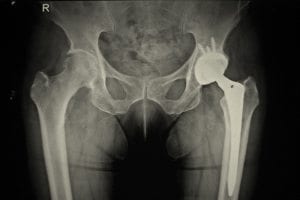Herzliya Medical Center
Tel: +972-9-959-4888
09:00-18:00
Hip replacement is one of the most common orthopedic surgical procedures today. The main indications for this surgery are a  traumatic injury to the hip joint and progressive degenerative disease. The surgery is performed using a hip implant, which replaces the damaged joint and is meant to restore mobility and relieve the pain. The implant is made of a ball and a socket, both implanted separately and then connected.
traumatic injury to the hip joint and progressive degenerative disease. The surgery is performed using a hip implant, which replaces the damaged joint and is meant to restore mobility and relieve the pain. The implant is made of a ball and a socket, both implanted separately and then connected.
Hip implants vary in size and composition. Until recently there were five main types of hip implants that differ in bearings:
The problem with the above-mentioned implants is that there is a chance of poor osteointegration in the surrounding bone, which could lead to an inflammatory process and, in the worse case, another hip replacement surgery. Lately, there has been an advancement in this field and a new type of implant has been developed, named Trabecular Titanium.
Trabecular Titanium is the latest innovation in the hip implants field. Its uniqueness is in the way it is manufactured and its design. This implant has a hexagonal cell structure that imitates the cell structure of the trabecular bone. The interconnected geometrical structure of the implant is created as an integral part of the prosthesis using cutting-edge electron beam melting technology (EBM).
The advantage of the EBM technology is in the fact that it builds components by adding layers of material rather than by removing material from a raw shape. The electron beam creates a 100% accurate implant based on a 3D design. This makes it possible to create any 3D design involving dense or porous parts, overcoming the technological limitations of a traditional orthopedic manufacturing process. Using this innovative technology a unique and complete system of acetabular cups has been created, allowing to adapt to different clinical indications. These cups offer maximum stability and excellent recovery of the joint’s biomechanical parameters.
Another unique quality of the Trabecular Titanium implant is that its structure is not a coating. The fact that there is no interface between the trabecular structure and the bone guarantees structure solidity and high resistance, thus no corrosion. There is no risk of detachment (adhesive resistance exceeds safety values imposed by the FDA by 400%) or delamination since the object is a single completely homogenous piece. Thanks to an elastic module very similar to that of the trabecular bone, Trabecular Titanium re-establishes physiological load transfer avoiding bone damage.
The long-term success of an orthopedic implant largely depends on the extent of its osteointegration in the surrounding bone. That’s why Trabecular Titanium is the best choice for optimal results.